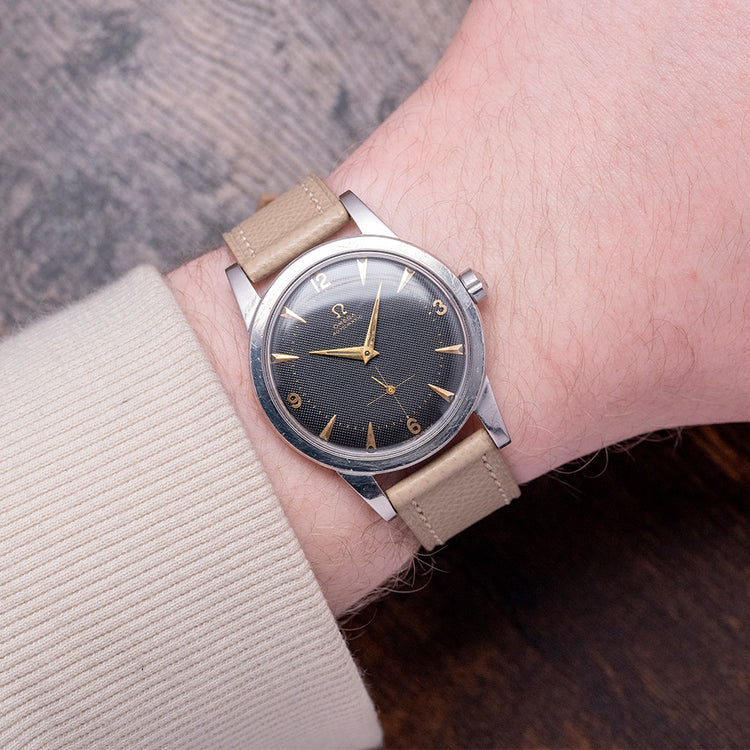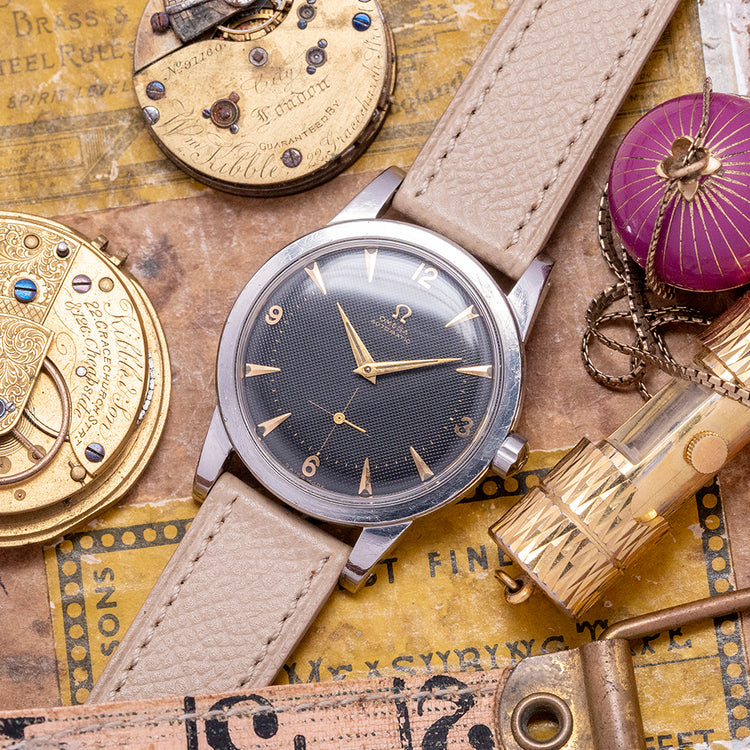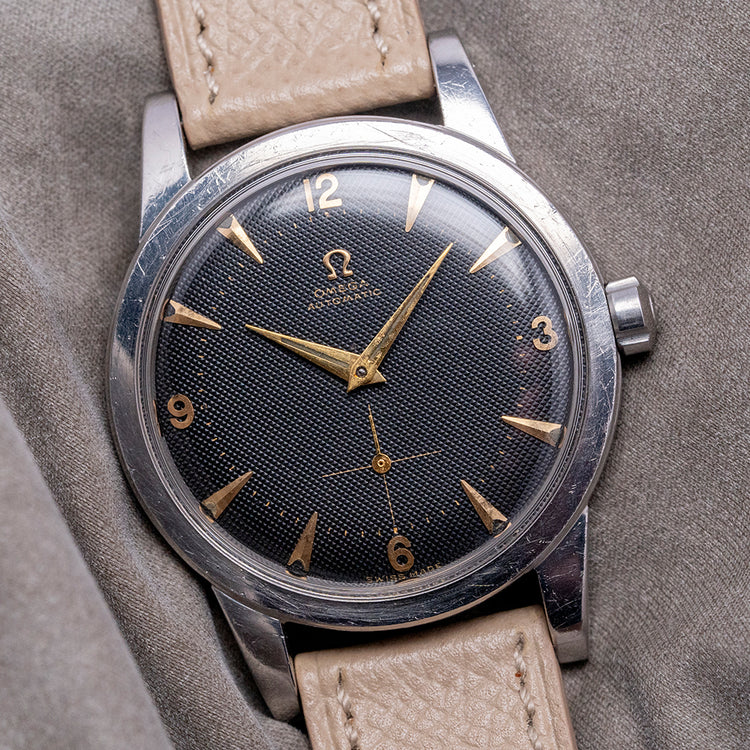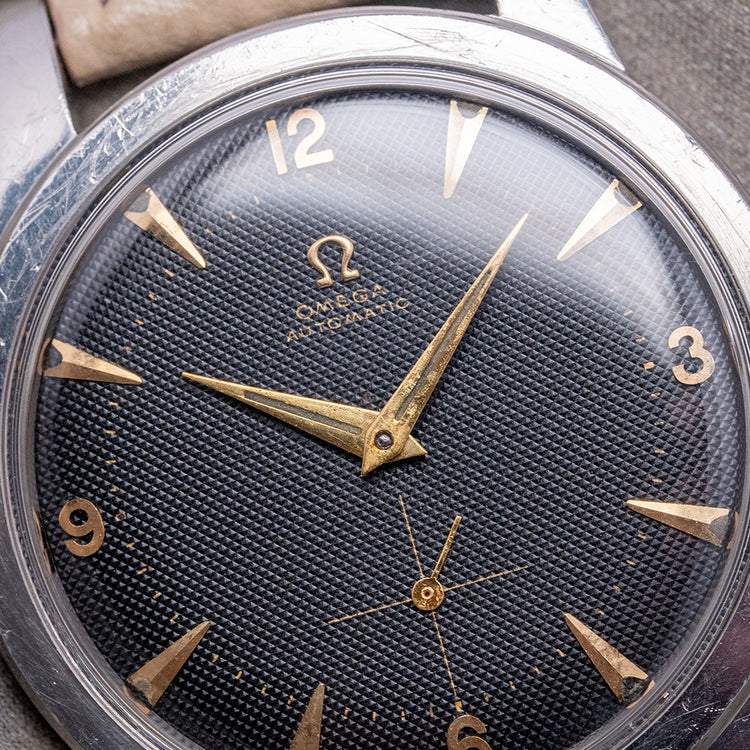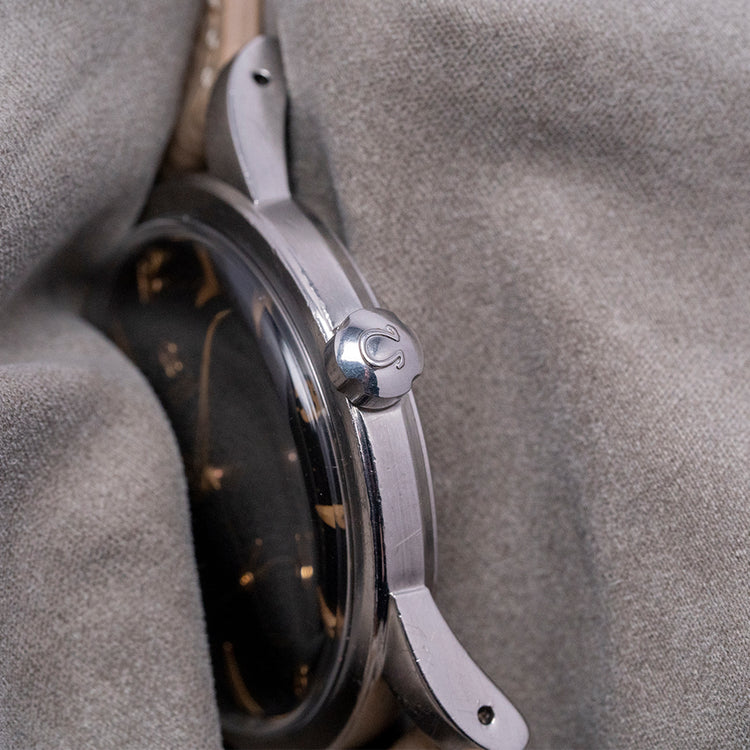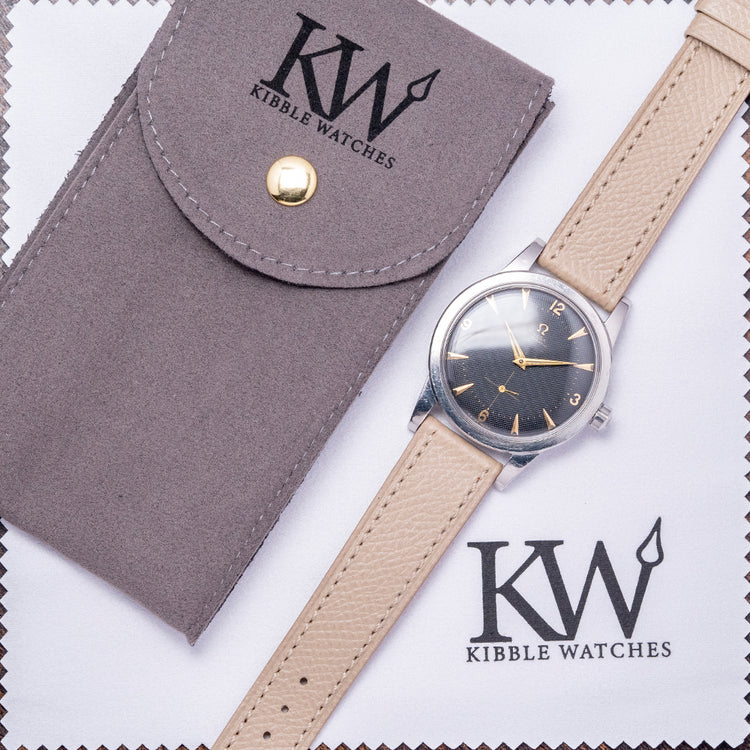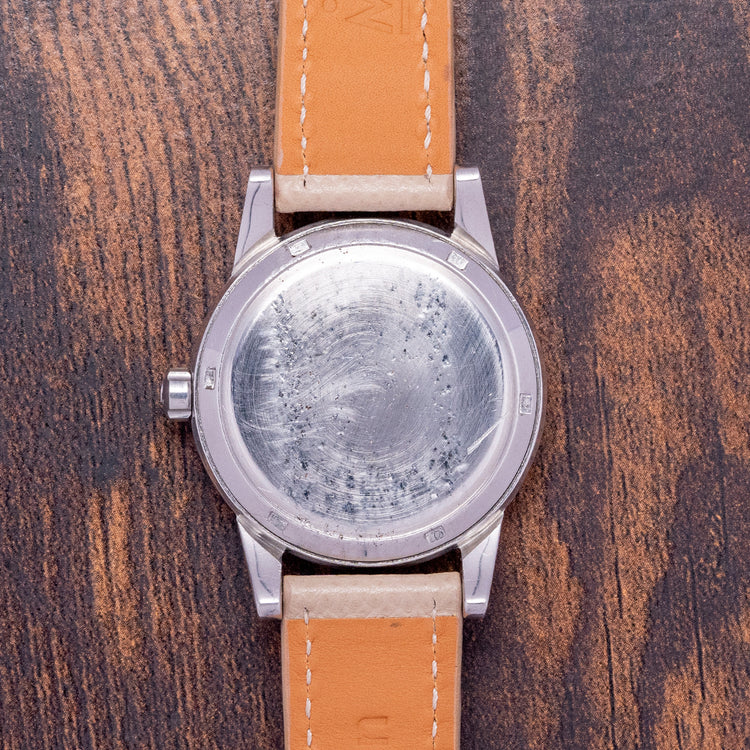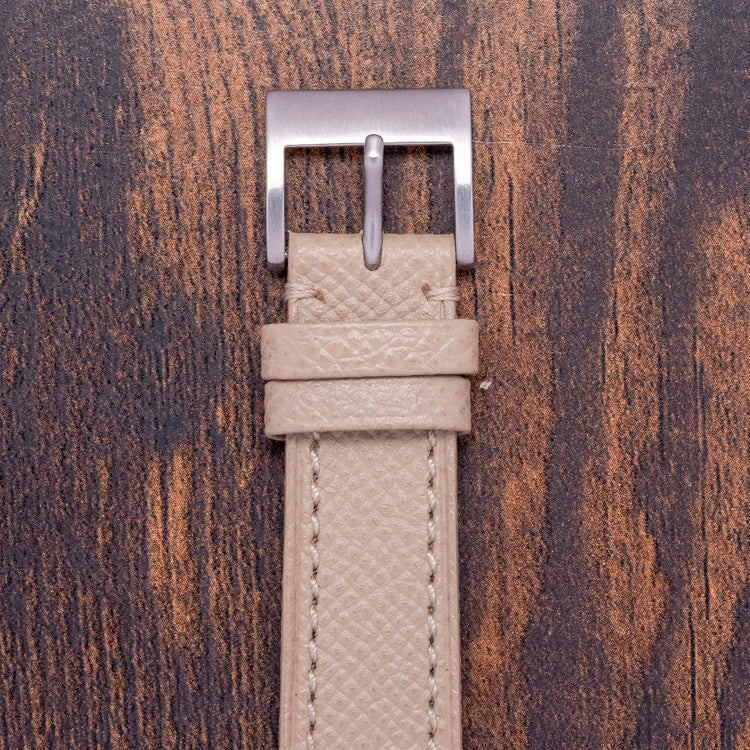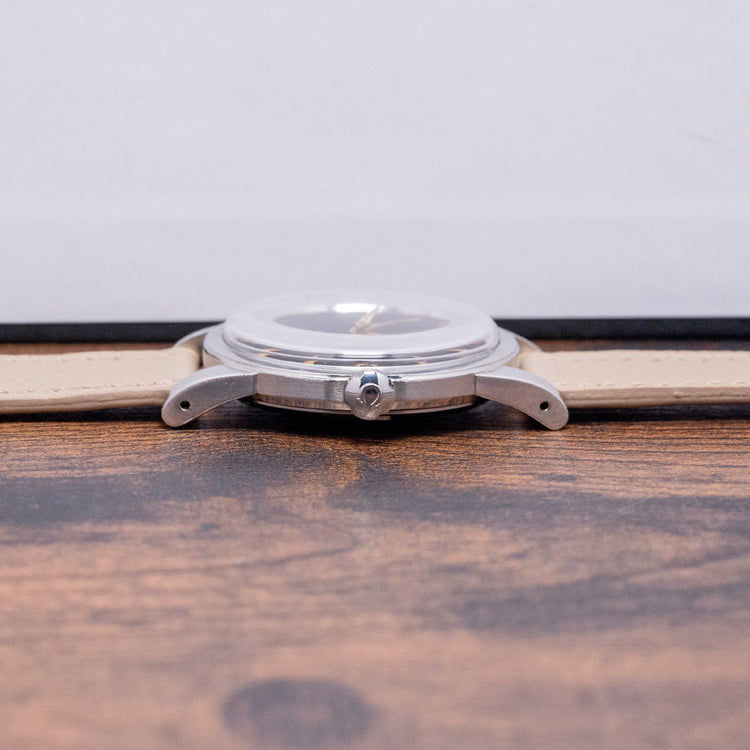More Information
Description
More
Less
Here we have a rare 1950 Omega Black Waffle 2493-8 with a Jumbo 36mm stainless steel case, a large case size for its time, gently curves over your wrist with thick tapered drilled lugs. Its curved, strong case flanks lead to a lug-to-lug length of 45.5mm and a case thickness of 10mm, ensuring a comfortable fit. On the right side is a signed crown. Its smooth bezel holds a domed crystal above a stunning black waffle dial. Applied Gilt dagger and Arabic numeral indexes mark the hours, elegant gilt Dauphine hands are complemented by sub seconds at 6 o’clock, and at 12 o’clock, we have the applied Omega motif “Automatic” underneath completes this early and rare vintage timepiece. On the reverse, a screw-down solid case back, inside a bumper automatic Omega Cal. 332, 17 jewels, beating at 19,800 beats per hour. It comes paired with a well-suited 18mm leather strap and pin buckle.
Points of Mention
More
Less
Personal Note
More
Less
Specification
More
Less
Movement : Bumper Automatic Omega Cal. 332
Age : Circa. 1950
Year : 1950
Case Size : 36mm
Case Thickness : 10mm
Lug to Lug : 45.5 mm
Lugs : 18mm
Condition : Pre-Owned
Box and Papers : None
Case Material : Stainless Steel
Warranty : 12-Months NON-Waterproof Warranty
The wrist model's wrist size is 7inch
About Omega
More
Less
Description
Here we have a rare 1950 Omega Black Waffle 2493-8 with a Jumbo 36mm stainless steel case, a large case size for its time, gently curves over your wrist with thick tapered drilled lugs. Its curved, strong case flanks lead to a lug-to-lug length of 45.5mm and a case thickness of 10mm, ensuring a comfortable fit. On the right side is a signed crown. Its smooth bezel holds a domed crystal above a stunning black waffle dial. Applied Gilt dagger and Arabic numeral indexes mark the hours, elegant gilt Dauphine hands are complemented by sub seconds at 6 o’clock, and at 12 o’clock, we have the applied Omega motif “Automatic” underneath completes this early and rare vintage timepiece. On the reverse, a screw-down solid case back, inside a bumper automatic Omega Cal. 332, 17 jewels, beating at 19,800 beats per hour. It comes paired with a well-suited 18mm leather strap and pin buckle.
Points of Mention
Personal Note
Specification
The Brand
Enquire or Book an Appointment
Would you like to discover further details about this watch, or perhaps arrange an appointment to view and try it on? Complete this form and a member of our team will get back to you shortly.
You May Also Like



























